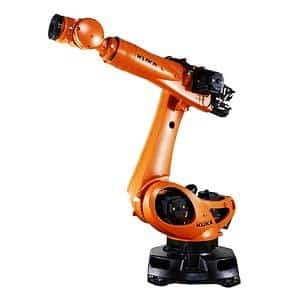Robots are expensive. Some companies can overlook the fact that installing industrial robots would be an expensive endeavor because they have the funds available. But, what about start-up companies that can't exactly put down a lot of money for industrial robotics? The International Federation of Robotics has said that by 2018, there will be 2.3 million industrial robots at work. However, that number could be adjusted upwards if robotics becomes affordable by then.
This would be possible with collaborative robots, or 'cobots'. These are industrial collaborative machines that are cheaper to buy than a full-fledged industrial robotic setup  but helps with factory efficiency. The average price for one is $24,000 but there are some that go for $10,000. So, the prices aren't bad for small companies who want to get into manufacturing or automate some of their assembly lines. The cheaper collaborative robots are single arms that do repetitive tasks like picking and placing or packaging. And they are becoming more attractive to companies and fast.
but helps with factory efficiency. The average price for one is $24,000 but there are some that go for $10,000. So, the prices aren't bad for small companies who want to get into manufacturing or automate some of their assembly lines. The cheaper collaborative robots are single arms that do repetitive tasks like picking and placing or packaging. And they are becoming more attractive to companies and fast.
The cobot market itself, according to Barclays, was sitting at $116 million last year, but will shoot up to $11.5 billion by 2025. Speaking to Reuters, Stefan Lampa, the head of robotics at Germany's Kuka spoke about collaborative robots: "By 2020 it will be a game-changer"
The leader in collaborative robotics sales is Universal Robotics, who say they are doubling the number of sales yearly due to the fresh demand for collaborative robots.
Collaborative robots are seeing a massive sales hike in not only the manufacturing industries but also the food industry. Barclays released their report that showed the UK would be spending $1.6 billion on automation in the next year. The report says that beverage and food companies would see "productivity improvements" of 25% and would also see jobs being creation despite more automation being implemented. This relates to the fact that more collaborative robots are being purchased that still make space for humans within jobs.
